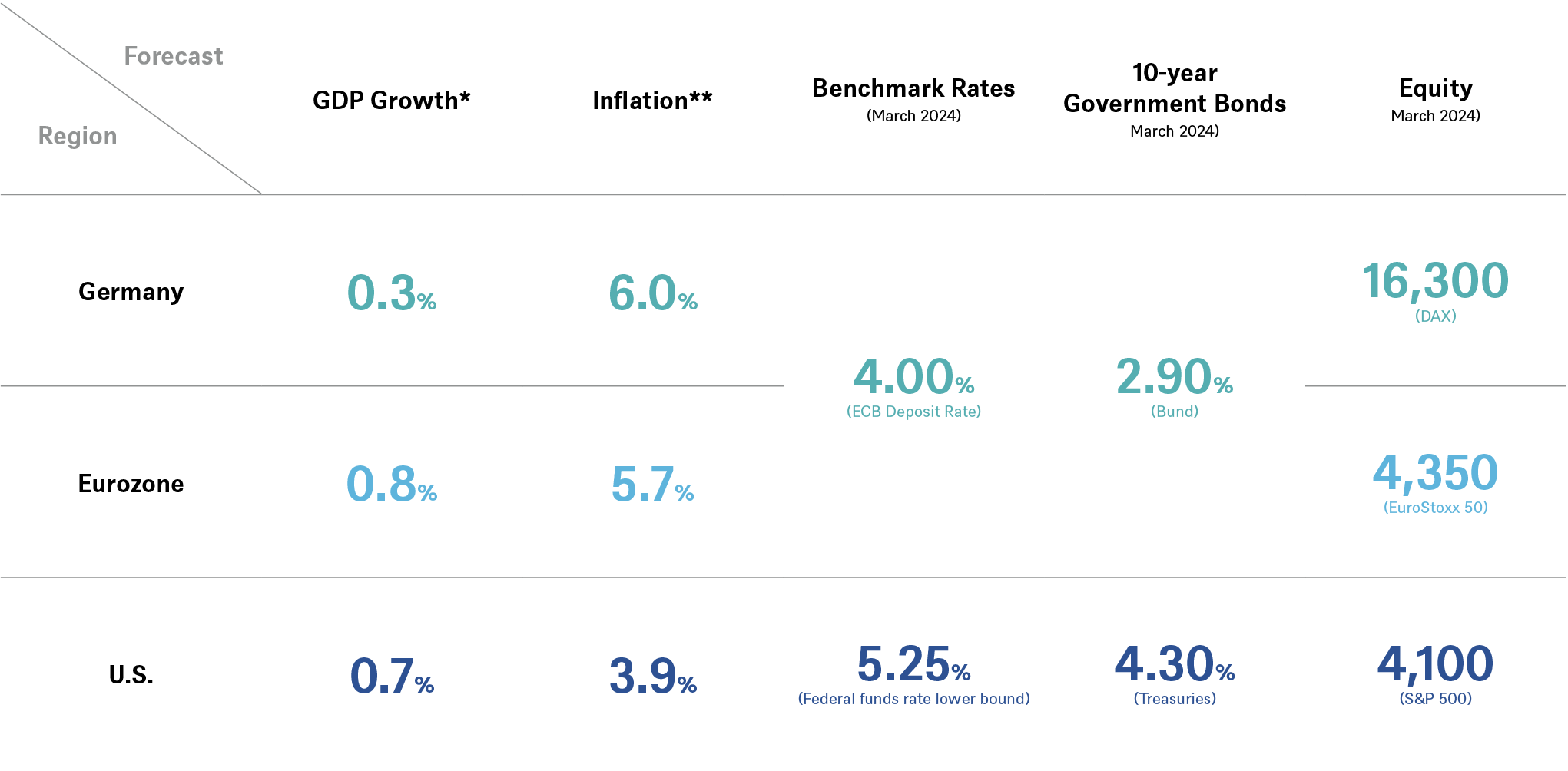- Home »
- Insights »
- CIO View »
- Chart of the Week »
- Tales of the Unexpected
In a macabre short story, Roald Dahl tells the tale of a poor passenger on a cruise ship, betting money he cannot afford to lose on how many miles they will travel that day. Realizing that the ocean liner is moving very fast, he decides to jump overboard, so that it will have to turn around to rescue him. The man makes sure an elderly lady notices him, jumps into the ocean, cries for help and waves madly at her as the ship disappears into the distance. Unfortunately, the lady is senile. "Such a nice man. He waved to me.", she tells her caregiver, who reprimands the old woman for wandering off alone[1].
That story, and in particular its punch line, came to mind, as we determined our new 12-month forecasts, some of the most important of which are shown in our Chart of the Week. Our base case is that in most developed markets, either very shallow recessions or periods of anemic growth followed by moderate recoveries may be likely. For China, we see a strong rebound in 2023, led by consumption and services, similar to what happened in other economies after Covid-restrictions were lifted, but also plenty of medium-term challenges.
DWS’ economic and market forecasts

* GDP growth expectations for 2023 (year-on-year in %)
** Consumer price inflation expectations for 2023 (year-on-year in %)
Sources: DWS Investment GmbH as of 3/6/23
The bigger story for financial markets is that we also see inflation as quite sticky, with more interest rate hikes to come. For the U.S. Federal Reserve (Fed), there is a risk of further upside to our forecast, if the U.S. economy continues to prove as resilient as it has been lately. All this makes for quite a challenging environment for many risky assets, as reflected in the tiny, low single digit price upside in the S&P 500 Index. For Europe and emerging markets, the upside is slightly larger (as are dividend yields). Within those later regions in particular, we also see some rather attractive pockets of opportunity in both equities and fixed income.
More about these relative assessments within various asset classes in our upcoming quarterly publications. Sticking with the big picture, however, just consider how weird the first four columns would have looked to you, back in, say, 2019. Anemic GDP growth, but inflation rates at eyepopping levels, not just by the standards of the 2010s. Benchmark rates well in excess of 10-year Treasuries and Bunds, clearly suggesting that whoever came up with these forecasts expects benchmark interest rates to come down eventually. As indeed we do. But like the Fed, we cannot know for sure how quickly inflation will come down as supply constraints lift and the full impact of previous monetary tightening kicks in.
Which brings us back to that story about the ship. It is – for now, anyway – moving too fast. The world’s central bankers, notably at the Fed and led by Jerome Powell have taken a big plunge in terms of how far and how fast they raised rates. Lately, they have been waving, at times even shouting, at markets that they intend to do what is necessary to get inflation back towards their 2% targets and that investors should not celebrate prematurely. Until quite recently, many market participants, like that elderly lady and her caregiver were minded not to act on such warnings. That alone makes us very cautious indeed. There might well be a happy end, but it seems too early to us to place big risky bets on the mere hope that central banks will get everything exactly right, at exactly the right moments, without markets losing their mind at some point along the way.



